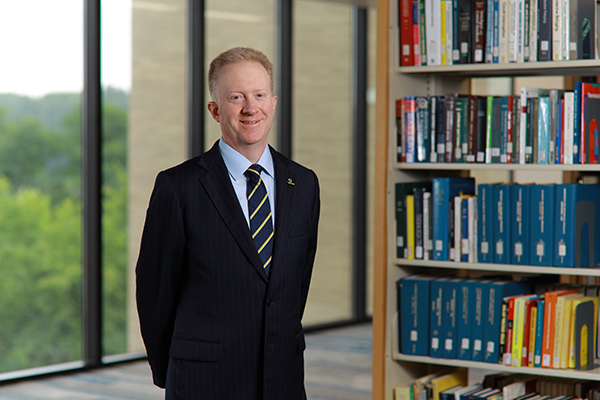Adaptations
Carlson Library gets creative with spaces to improve visitor experience
By Laurie B. Davis
Following the 2016 renovations at the William S. Carlson Library, its gate count increased 40 percent within the first year. “So, we now have a million visitors; that’s a tremendous jump in one year,” says Beau Case, dean of the University Libraries. “And it comes down to quite simply, if you build it, they will come.”

Case is counting on some of the strategies being developed at Carlson to build on that momentum by providing a destination for research, study, socializing and collaboration.
The renovations introduced a new physical appearance for the five-story building with its glass window curtain on the east side. On the second floor, now minus its book stacks, individual and group study rooms occupy the perimeter of the open space. Students also can fill up on coffee and lattes at the Starbucks café on the second level. “We offered students a beautiful space in which to study and hang out, and a lot changed. It wasn’t just beautification,” says Case.
Culture, collaboration and café au lait
As UT students, faculty and staff check out the new surroundings in Carlson, Case and his team continue to find ways to improve their library experiences.
Dave Remaklus (Bus. ’85, MBA ’88), director of library operations, has been assisting with some of the new offerings and opportunities at the library, including the creation of an intellectual café on the second floor. “The idea is to provide a collaborative space for students and faculty to exchange ideas and engage in broader conversations outside of their areas of study,” says Remaklus. The goal is to foster an environment for creativity and dialogue, and for a little inspiration, the reading materials in the space will include magazines, comic books, graphic novels, art books and newspapers, among other literature.
“In addition, we hope our faculty and students can enjoy impromptu artistic performances and programmed musical events,” says Remaklus, who also oversees the library’s experiential learning program. By collaborating with the UT Department of Music, a piano has been installed in the café area. Students are able to play during certain hours. “It is now very common to hear piano music on the second floor every Friday afternoon,” says Remaklus.Case is considering a performing arts experiential learning program, possibly featuring a “Thursday Night at Club Carlson,” with a student jazz combo. He envisions a small stage and possibly pop-up Shakespeare, with drama students showing up to perform a surprise scene from “Romeo & Juliet” or “Julius Caesar,” for example.
Staff at Carlson also will launch a new book display featuring both print and ebooks. The focus often will be on new and classic titles that highlight celebratory months such as Women’s History Month or Black History Month. The display will live in front of a brand-new mural painted by two BFA students, Tara Yarzand and Rose Mansel-Pleydell. Both women are students in 2-D studies in UT’s Department of Art and participate in the library’s experiential learning program.
Uncommon collections
The physical alterations in Carlson are as tangible as plopping down in a big comfy chair with a Caramel Macchiato, but many library updates and upgrades are more inconspicuous, especially when it comes to technology.
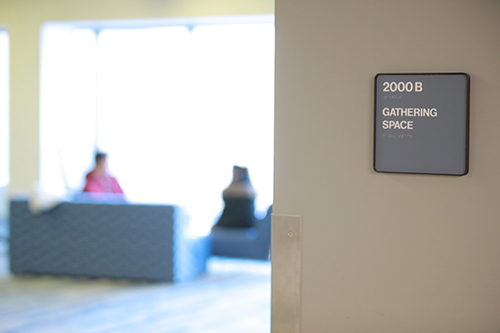
Case describes archival preservation as an area of growth, but at the same time, library collections must be scrutinized for duplications and managed because of space constraints. UT is part of the state library depository program that comprises five regional depository libraries. UT and Bowling Green State University share the Northwest Ohio facility in Perrysburg. “Materials with long-term value in research, something that has a good chance of being used again, or unique items, like a last-copy situation, are things we want to preserve, but they may not be the kinds of books and journals that get a lot of use, so we move them off-site,” says Case.
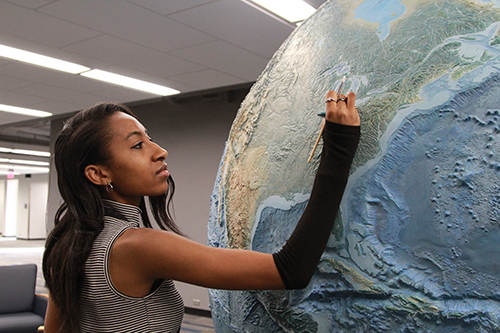
Carlson Library also is one of six institutions worldwide with archival collections in disability studies. “We’re also the only place in the world with a degree program in disability studies,” says Case. “So, we would like to grow our archives in this area, with the goal of making UT the destination for disability studies research.”
Always room for new ideas
When library space is not well-utilized, Case likes to change that scenario. His staff may convert two outdated computer labs into a video gaming room and a film screening room. The screening room would accommodate any instructor on campus who needs to show a film to his or her students. A new streaming service for digital media, called Kanopy, is currently available for professors teaching film or using films to supplement their course curricula. Requested films are added to a server for access, says Case. “And then they can deliver the content to students either through a link, or you can incorporate it into Blackboard,” he adds.
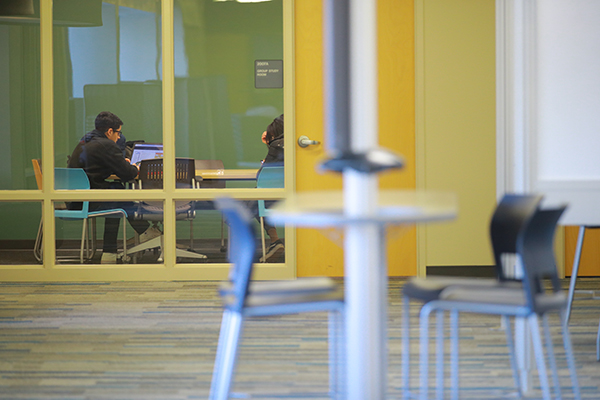
Adaptive progress
In this Internet age, libraries, like many other long-established institutions that deal in information sharing, have been adapting to how they can best serve their users.
“What we’ve had is a generation of Internet users, and libraries are struggling with perceived relevance,” says Case. He says this is not only a student perception, but a perception held by anyone who has grown up with the Internet and who is accustomed to being self-reliant doing research.“Back in the day, you had to go to the library to do any research. We were like wizards at Hogwarts. It was all print, and the print was very difficult to use. You needed a librarian to help you navigate this arcane knowledge and teach you how to use it. Librarians really were wizards back in the day. We’re not perceived as that anymore, although we still have the expertise.”
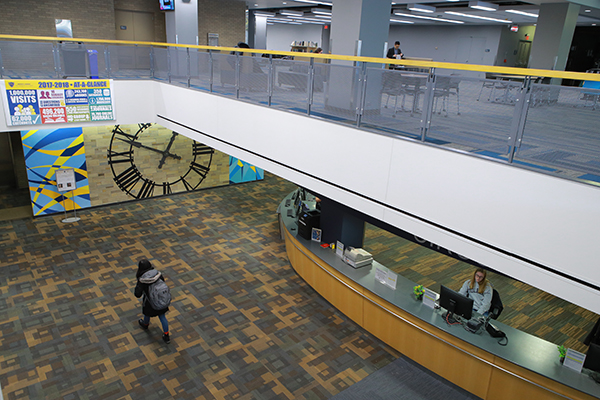
Building a library that engages student, faculty and staff researchers requires outreach and dialogue about existing synergies. “What it comes down to is how can the library not just support but enhance research, teaching and learning on campus,” says Case. “We need to reintroduce ourselves to the campus but also find ways to partner with the campus.”
Related content:
Ribbon-cutting Ceremony Oct. 12 to Celebrate Library Renovations
Renovations Underway for Mulford Library
http://utnews.utoledo.edu/index.php/01_15_2019/renovations-underway-for-mulford-library
Canaday Center Closed for Renovations
https://utnews.utoledo.edu/index.php/01_18_2019/canaday-center-closed-for-renovation



